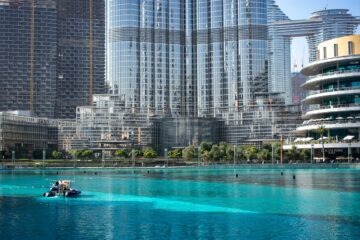One of Europe’s key sources of tourism is its cultural legacy. Cultural tourism is estimated to account for approximately 40% of all tourists visiting Europe. European cultural tourism is also an important approach to improving Europe’s image around the world by promoting the many values that have resulted from centuries of cultural exchanges, linguistic diversity, and inventiveness.
Visitors to Europe believe that this is their last opportunity to learn about international cultural tourism. All worldwide cultural tourism products will position Europe as a leading destination for conserved heritage and genuine cultural knowledge.
The European Commission classified it as a crucial component in the development of tourism in Europe in 1990. Since then, the European Association of Tourism and Leisure Education (ATLAS) has conducted a number of research to promote international cultural tourism.
According to an OECD report-
Values promotion and preservation
Economic growth and job creation
Physical and economic renewal
Tourism should be strengthened and/or separated.
Population preservation
Increasing cultural awareness
The European Union has recognised the need to provide cultural attractions and revitalise its heritage sites for commercial reasons in response to the growing demand for cultural tourism. Individual countries are starting to work towards competition to increase national cultural tourism levels. Cultural tourism is about the journey as well as the destination. It is a path of self-discovery and awareness.
European Union’s culturally rich regions
Cultural visits are durable because reasons differ in numerous ways. Some travellers seek spirituality, while others seek art. Other places in Europe, regardless of their cultural motivations, should be visited because they teach people about the brilliance of their predecessors and their intellectual way of life.
The Basilica of St. Peter
This Late Renaissance church serves as a gathering place for Catholics from all around the world. The church’s location, Vatican Hill, is where Saint Peter, the great apostle, died and was buried in 64 AD. Because St. Peter is regarded the first pope, the construction of the main Catholic church in the area can be described. All of the paintings and drawings throughout the chapel are a visual feast. Tourists that want to learn about the arts and architecture as part of their itinerary visit the area.
The Roman Colosseum
The Colosseum is the largest Roman construction project in the city of Rome. The city’s focus on public entertainment was a theatre that could seat over 50,000 people. Gladiator battles, fairy tales, animal warfare, and even assassinations were all created using it. The most impressive aspect of this mammoth opus is its engineering versatility in short-term techniques. Theatre is a separate subject that is examined in numerous elements of Roman culture.
Clunaic locations in Europe
Cluny was a site of monastic change in the 10th century before becoming a church. This church’s activity later led to the mediaeval world’s rebirth by spreading Christianity, rethinking social connections, and organising a better public space. The distinctive harmonic architecture, sculptures, and paintings of these Clunaic landscapes throughout Western Europe contribute to a great legacy passed down to monks for future generations.
Transfer Depot provides low-cost taxi service in London and specialises in airport transportation.



